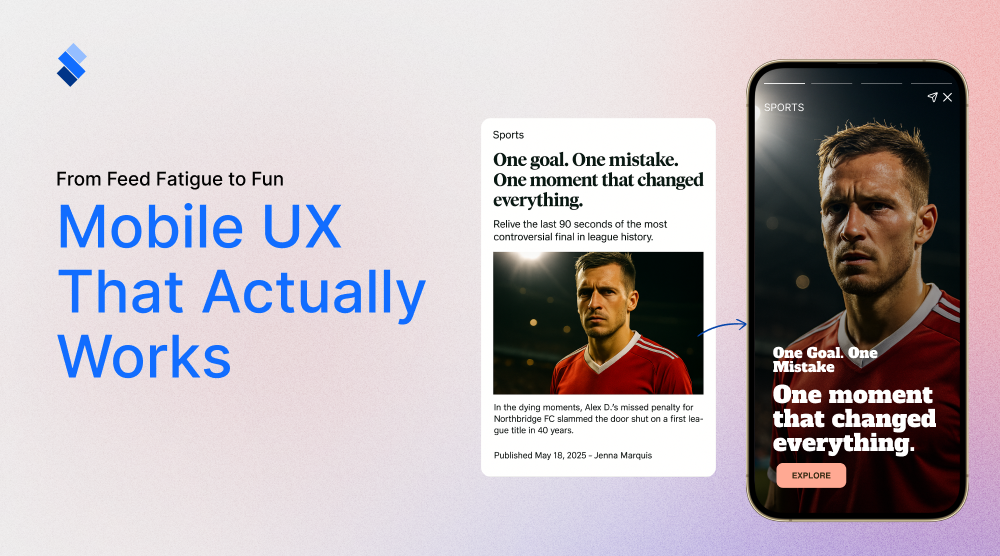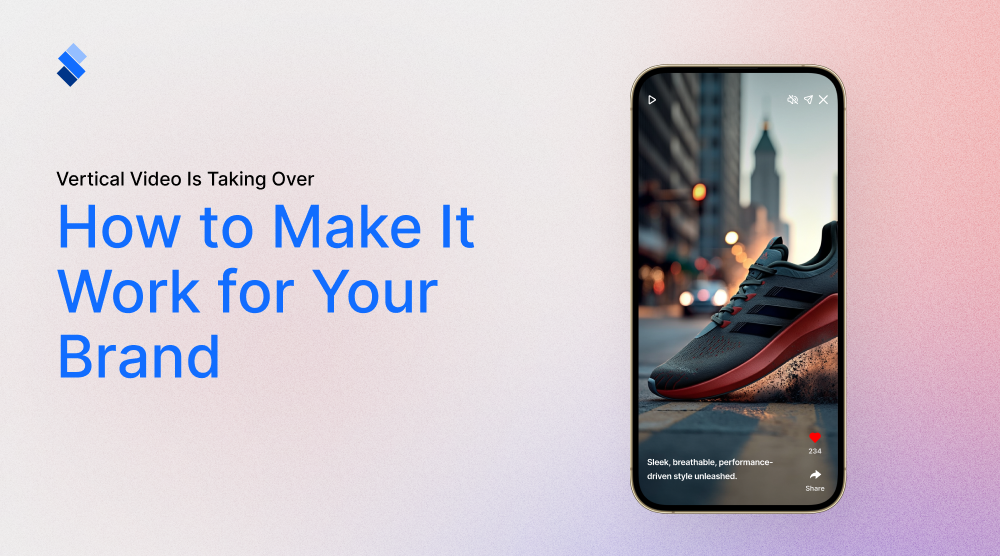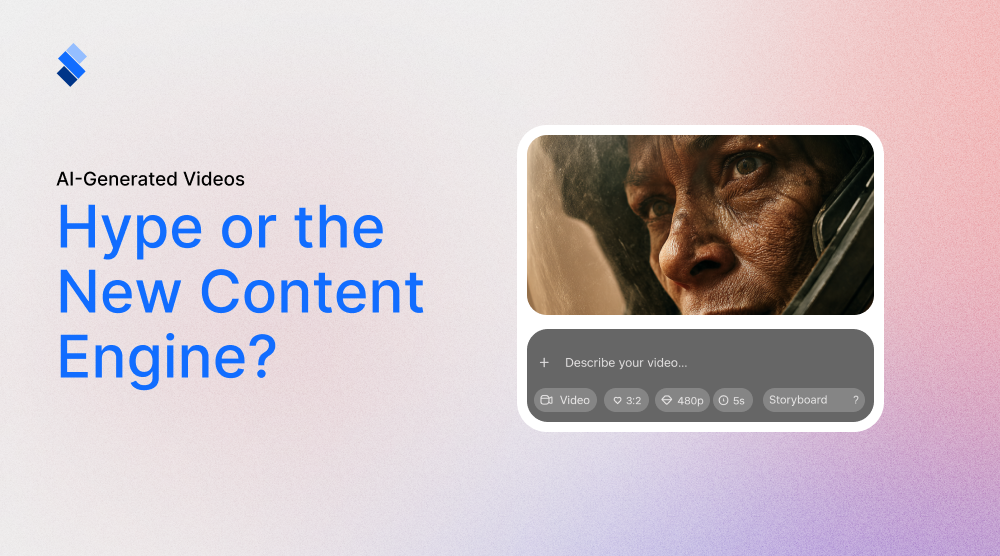Effective Ways to Monetize Your Mobile App: A Marketer's Guide
While there are different ways to monetize your mobile app, not everyone will be suitable for yours. In fact, few will. This is why you need to closely study each of them.

The main reason why people create an app is to generate revenue. Whether it is a shopping app, a gaming app, or even a lifestyle app, revenue generation is the main goal. Now, fortunately, there are plenty of ways to make money from an app. How you choose to monetize your app will have a huge impact on how well it performs. It may make or break it. So, let's explore various ways to monetize your mobile app and determine which one is best for you.
Different ways to monetize your mobile app
To properly outline various app monetization strategies, we will consider each in three aspects.
- How easy is it to implement (we will scale it from 1 to 5)
- How easy it is to scale up (also scale from 1 to 5)
- What apps usually use the strategy in question
Of course, it is never easy to sum up whether a specific monetization system is effective or not. But, hopefully, through these three you will get a decent enough idea of what strategy you should opt for.
Pay to download
Arguably the most straightforward type of app monetization. Here you simply treat an app as any other commodity. If a person wishes to use it, they need to pay a set price. A one-time fee to download the app from the app store. While this model is straightforward, it often limits user acquisition. Without knowing what your app is like, some users may be hesitant to pay upfront. In this case, your app needs to be clearly better than your competition (who will try to provide a "free" version).

Ranking: 4 - 5
Because it is so straightforward, this strategy is both easy to implement (given that people are willing to purchase it) and easy to upscale (increase the price, if needed). So, we will give 4 and 5 for both implementation and the scaling up. Apps that rely on this method are those that have an established brand name and a well-developed reputation. Examples are:
- Forest: A productivity app available on iOS and Android platforms.
- Dark Sky: A popular weather app
- Toca Life: City: An interactive playset app designed for children
In-App Purchases (IAP)
As we said, for every app that uses a simple pay-to-download model there are two that use the IAP. The reason for this is simple. It is fairly easy to set up an app so that it is "free" by implementing In-App Purchases. So far it has been established that people are far more willing to spend money on an app if they already enjoy using it. And if downloading the app is free, why not give it a go? This simple logic is what makes IAP so effective. As of 2023, 48.2% of mobile app earnings as due to In-app purchases. Meanwhile, ads-based revenues are at 14%, while paid app downloads are at 37.8%. While these statistics shouldn't guide your decision of app monetization, you should keep them in mind.
There are essentially two ways in which you can implement IAP. You can either pay-gate certain elements or time-gate them. Pay-gating means that you offer some part of your app for free (or for a smaller price) and require further payment for other parts. That way, users get a glimpse of what your app is like and feel motivated to pay extra. Time-gating means that the user will have access to your entire app but for a limited period. During this period the app can be free (just think of it as a trial period). Or, it can be paid but at a reduced price.
Ranking: 3 - 5
IAP is especially receptive to gamification, as it is quite natural to use gamification to guide people through your app and weave purchasers into the process. This is because the IAP model can have a ton of variants that you can use in different ways. Unfortunately, some can be more difficult to implement than others. As such, we would give IAP model 3 on the ease of implementation. As for scalability, IAP ranks as 5. All the different ways you can implement it means that you can also upscale it with relative ease. Every new feature that you think of adding can present an extra purchase, or can be a part of the "free" version.
Examples of IAP apps include:
- Candy Crush Saga: A highly popular mobile game that had a global revenue of $956 million in 2023.
- Tinder: A popular dating app with around 75 million users.
- Pokemon GO: A gamin app where you use AR to hunt for Pokemon.
Subscription
Another fairly common way to monetize your app is through subscriptions. And in certain instances, it can be quite lucrative. This model is common in apps offering premium content, services, or access to exclusive features. It is quite natural to have different subscription payments to accommodate various users. But, the idea behind subscriptions is self-explanatory and easy to implement. As such, it has both 5s on the ease of implementation and upscaling.
Ranking: 5 - 5
Keep in mind that it is not uncommon to have a charge-free subscription option as a way to draw people in (Tinder is a good example). And if you understand your audience well, you'll be able to find a good reason why they should opt for a monthly payment for your app. Keep in mind that if you don't have the "free" subscription model, there will be competitors that offer it. Still, some apps manage to see astounding success, even though there are "free" competitors. These apps include:
- Netflix: Video streaming app where you can watch TV shows, films, and series.
- Adobe Creative Cloud: Adobe's suite of creative software, including Photoshop, Illustrator, and Premiere Pro
- Headspace: A meditation and mindfulness app that offers guided meditation sessions, sleep sounds, and mindfulness exercises.

Advertising
Asking people to outright pay for your app or a certain aspect of it, might not always be the best idea. While it is fair to ask for compensation for something you've created, it is not always wise. For smaller, less popular apps, it is often better to find ways to stay free. After all, if you don't have the marketing to support you, you will have a fairly hard time convincing people to pay for your app. In this instance, app creators often choose to display ads.
Now, it is important to note that properly integrating ads into an app is easier said than done. Even if users recognize that a free app needs to have some way to make money, they will still feel frustrated if they have to watch an unskippable ad every 5 minutes of using the app. This is why, even though it may seem lucrative to push in as many ads as possible, you need to be careful. You need to figure out what the usual user experience in your app is, and when would it be suitable to implement an ad.
Ranking: 4 - 2
Modern tools make displaying ads fairly simple. In fact, StofiyMe Ads provides a neat option to integrate ads into your app with relative ease. So, while the experience aspect may be difficult, the technical aspect is fairly easy. This is why we rank implementation at 4. On the other hand, it may not be as easy to upscale your ads if need be. You are essentially selling ad space within your app, so you will have to find interested parties to pay extra for hosting them. Such negotiations may include other demands and concerns, which is why we rank upscaling at 2.
Examples of successful apps that rely solely on ad revenue include:
- Pinterest - A lifestyle app with product discovery features.
- Vampire Survivors (Mobile Version) - A terrific example of a simple free game that has 1.7 million downloads on iOS and 1.49 on Android.
- BBC News app - A substantial news app with 12.6 million users in 2023.
Data Monetization
Monetizing user data is by no means a novel idea. Most managers will make use of both first-party and third-party data when researching a specific market. So, some app managers chose to sell user data to wanting buyers. While this is a viable option, you need to understand what it entails.

Firstly, you need to be able to collect sample data. This means that enough people need to download your app. And, they need to be willing to provide the data in question. You will then need to filter, package, and prepare the data for transfer. Furthermore, you will need to identify buyers who will be willing to pay for the data you've acquired. All this is to say that monetizing user data is far from easy.
Ranking: 1 - 5
As such, we rank it as 1 on the implementation scale. If you do manage to successfully collect and sell user data, you will have a fairly smooth time up-scaling it. If people are willing to provide their personal information to you, you likely have an app that they consider worthwhile. As such, that will likely grow in popularity and draw in new people. The more data you have (especially if it is good quality) the easier it will be to find new buyers. So, in regards to upscaling, we consider this a clear 5, given proper data management of course.
Examples of apps that make their revenue from data monetization include:
- LinkedIn: Professional-oriented social media platform.
- Amazon: An online shopping app.
- Facebook: The largest social media platform.
Sponsorships and Partnerships
It is not that uncommon for brands to collaborate with other brands or other businesses to sponsor the app or specific features/content within the app. This can include branded content, sponsored events, or co-branded promotions. But, monetizing your entire app around sponsorships and partnerships can be tricky. Firstly, the more you rely on outside funding, the more say they will have with your app. They will likely place demands on how you present their brand, and where within the user experience it shows.

Ranking: 1 - 1
Depending on what your app is about, and how you organize it, certain sponsorships and partnerships can be beneficial. For instance, an app that revolves around fitness can benefit from partnering up with a fitness equipment company. But, it is quite difficult to find the right way to promote a brand within your app. Either your partner will feel that you aren't representing them enough. Or your users will feel that your app is simply a voice piece for the brand. And, at worst, both. This is why both for upscaling and implementation, sponsorhips are somewhere between 1 and 2. However, there are certain apps that saw success through it like:
- Twitch - A streaming app that creates partnerships with popular content creators.
- Waze - Navigation app that provides real-time updates.
- Strava - Fitness app where users track their running and cycling.
Crowdfunding
Creating an app requires time and effort. Even if you have a fully developed idea, it will still take skilled labor before you see it to fruition. Large brands usually have the necessary funds to invest in app development. But, for smaller brands, this is rarely the case. This is why when people decide to create an app, they might look to crowdfunding.
Crowdfunding is the type of app monetization where users essentially give you money to create the app (your app is funded by the crowd). Although an interesting prospect as you don't have to risk your own funds, it does come with a degree of difficulty. Firstly, you need to come up with a decent reason why people should crowdfund you. Your app needs to be useful, unique, and interesting to a specific audience. This is why, in most cases, crowdfunding is reserved for fairly niche apps that cannot find proper funding through sponsorships.

Ranking: 1 - 5
Most apps that try crowdfunding either don't collect enough money or don't spark enough interest, which is why we consider implementation at 1. For upscaling, crowdfunding is surprisingly easy. Sites like Kickstarter, IndieGoGo, and GoFundMe all make it quite easy to set up a crowdfunding campaign. And, if you overcome the hurdle of obscurity, you can always introduce grading rewards for generous backers. So, we consider upscaling to be a 5.
Examples of successful apps that were financed through crowdfunding include:
- Pebble Smartwatch - A well-known smartwatch brand.
- Exploding Kittens - Card game
- Superbook - Helps turn smartphones into laptops.
Final thoughts
As you can see, there are various ways to monetize your mobile app. The main point is that they are seldom exclusive. It will be perceived as greedy to try to yield revenue from both subscriptions and ads. But, it is by no means impossible. What you need to do, as an app creator, is to figure out which one suits your app best. Don't think that you can first design an app, and then figure out monetization. In order for it to be effective, it needs to be an integral part. From the start. So, give yourself time to thoroughly consider different monetization methods, and opt for one that will be the least intrusive for your user experience.







